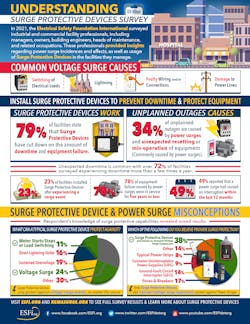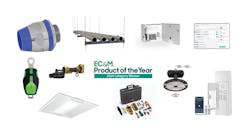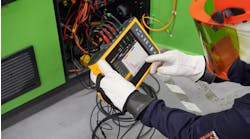The Electrical Safety Foundation International (ESFI) and National Electrical Manufacturers Association’s (NEMA) Low Voltage Surge Protective Devices Section (BI-VS) recently surveyed commercial and industrial facility professionals, including managers, owners, building engineers, heads of maintenance, and related occupations. These professionals provided insights regarding power surge incidences, misconceptions, and the usage of surge protective devices in their facilities. Most interestingly, transient overvoltage events, more commonly referred to as surges, were cited as the third leading cause of downtime.
Surge protective devices were viewed as a success by most respondents, as 79% estimated that downtime and equipment failure was significantly reduced. The vast majority of survey respondents, 72%, claimed to be either very or extremely familiar with power surges, while only 8% were only slightly or not familiar at all. The most commonly cited causes of power surges were switching of electrical loads, lightning, faulty wiring and/or connections, and damage to power lines.
In looking at the key findings, when asked whose facilities had experienced unexpected downtime, 49% reported that a power surge had caused such an interruption within the last 12 months. Unexpected downtime was common, with over 72% of facilities surveyed experiencing downtime more than a few times a year. Twenty-three percent of respondents indicated that they installed surge protective devices after experiencing a surge event. Thirty-four percent of unplanned power outages were caused by power surges and unexpected resetting or misoperation of equipment. Equipment recently placed in service bore the brunt of power surges that failed, with 78% having been in service for five years or less.
Only surge protective devices, also known as transient voltage surge suppressors, protect against power surges. Typical power strips, consumer uninterruptable power supplies, ground-fault circuit interrupters, and fuses or breakers do not. Survey results show that installing surge protective devices will protect against downtime, improve system and data reliability, and reduce electrical failures to keep your facility and electrical equipment running smoothly. To see the full survey results, or for information on power surges and surge protective devices, visit esfi.org and NEMASurge.org.




